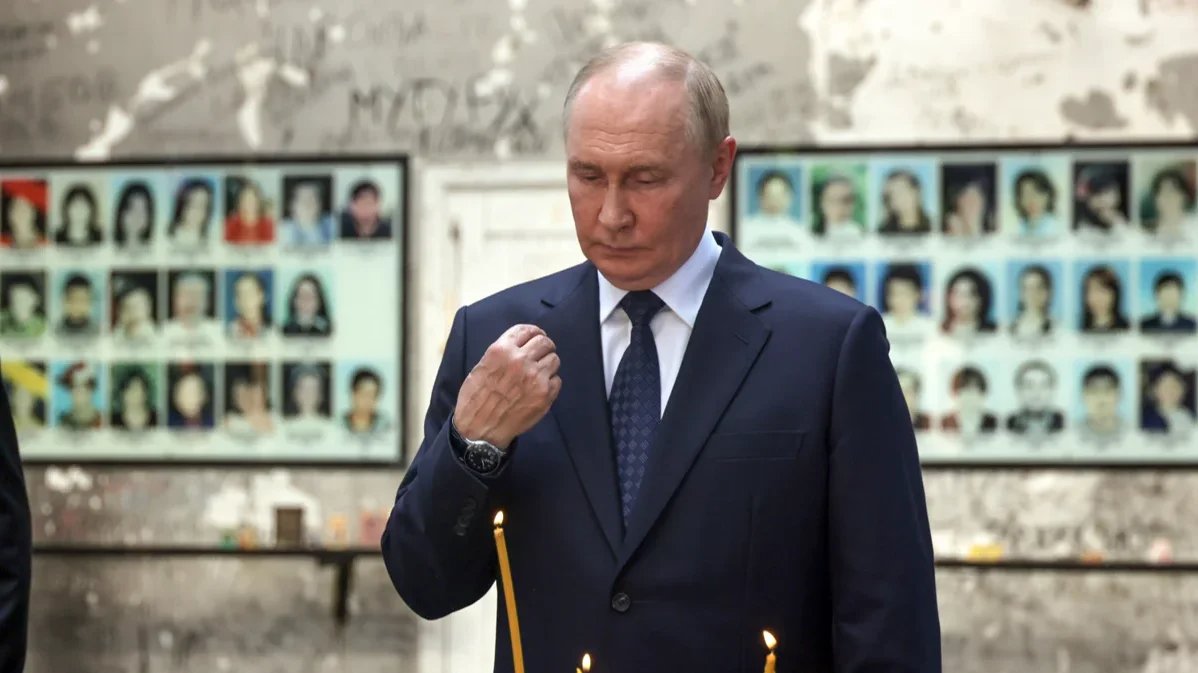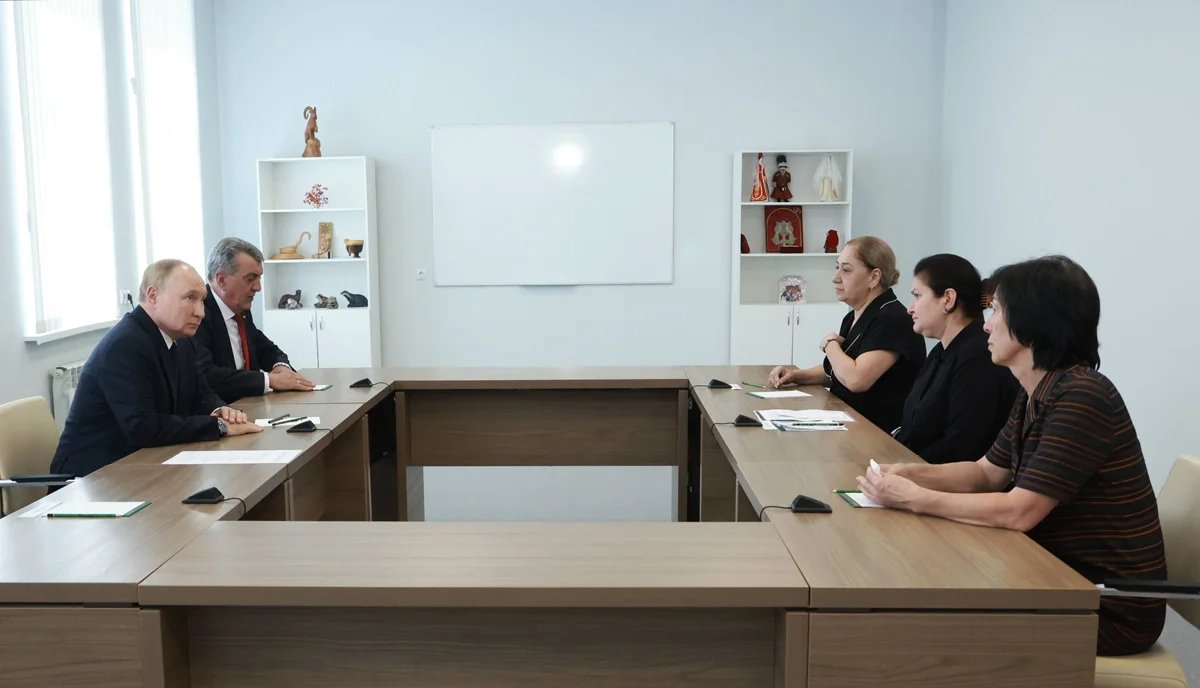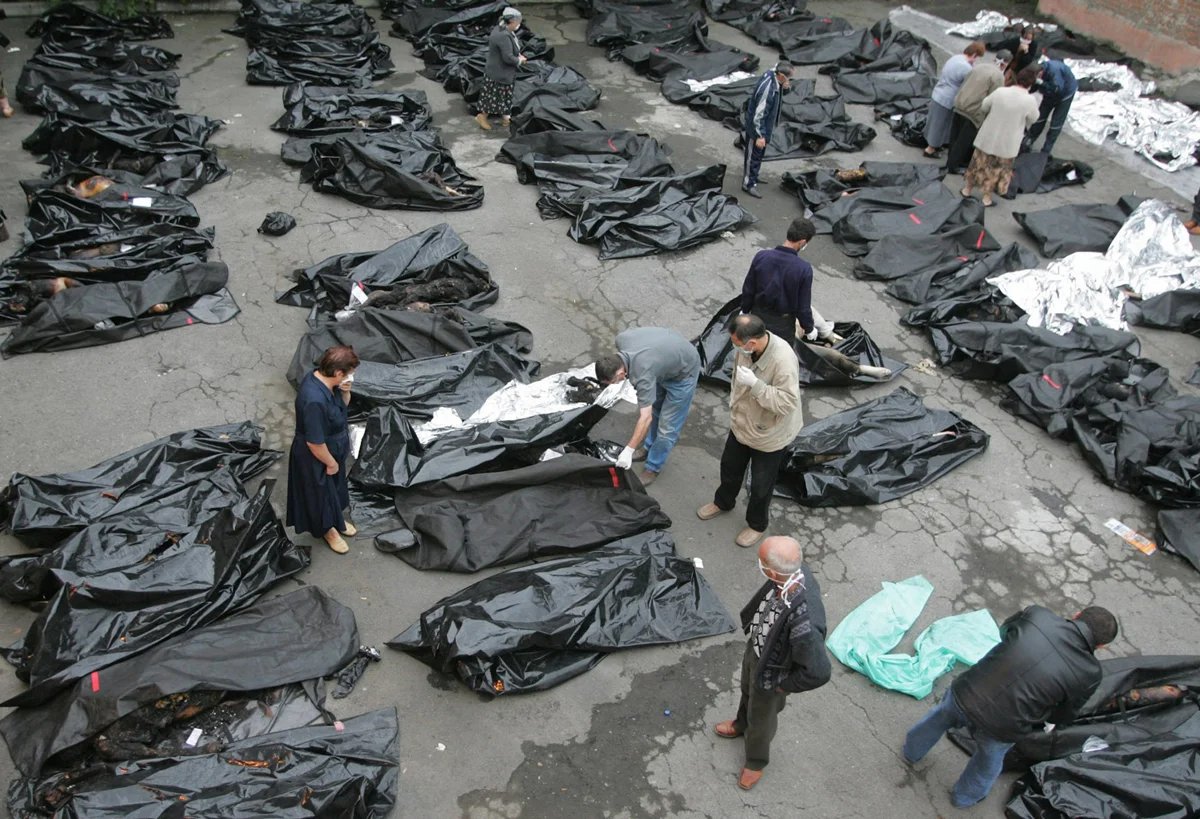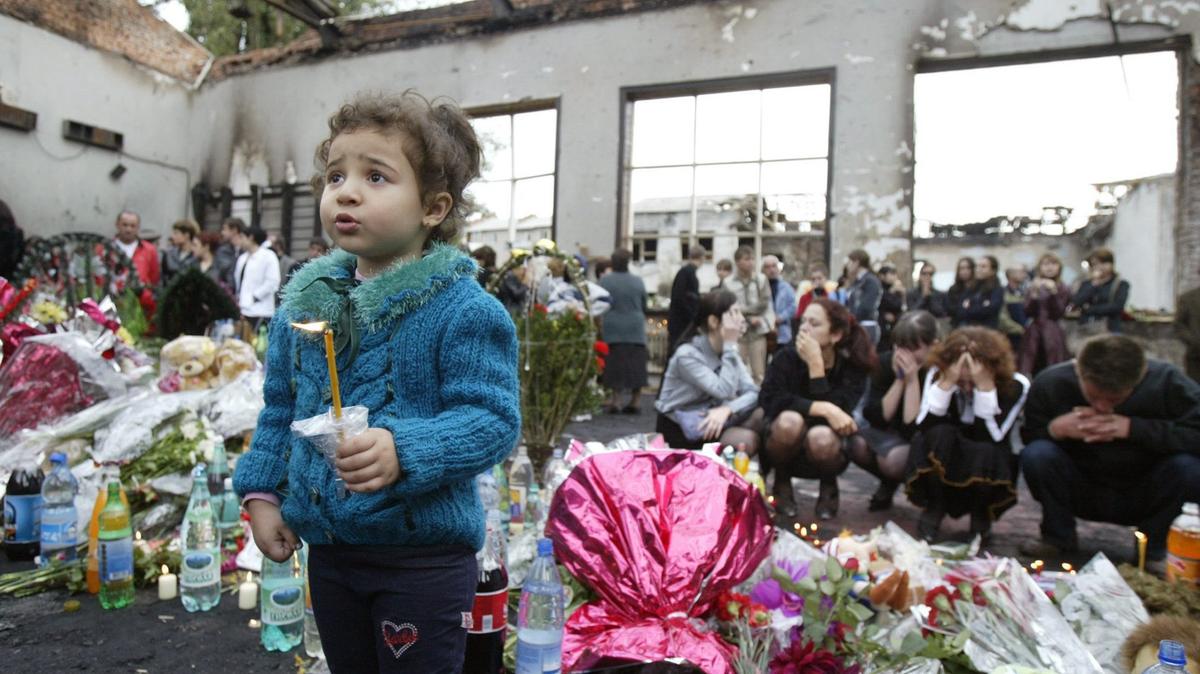The Beslan school siege began on 1 September 2004 when armed Chechen rebels took over 1,100 people hostage on the first day of the school year in the North Caucasus republic of North Ossetia. The siege, which lasted for three tortuous days during which the hostages had no access to food or water, ended in a botched attempt to storm the building by Russian special forces, who attacked it with aerosol bombs and rocket-propelled grenades, killing 334 people, 186 of whom were children.
Survivors of the attack and the relatives of those killed have always been highly critical of the authorities’ response to the crisis and have for years accused the Russian government of mishandling the attack and the astonishingly violent “rescue operation”.
On Tuesday, Vladimir Putin flew to the North Caucasus after a visit to Azerbaijan, and visited the republics of Kabardino-Balkaria, North Ossetia and Chechnya. He spent around four hours in each region before flying back to Moscow. While his visit to Chechnya had been announced long in advance and was thoroughly prepared for, with virtually the entire republic being locked down in preparation, the residents of Beslan were only informed of Putin’s plan to visit the town the day beforehand. The reason for that was clear: feelings of anger towards the Kremlin and towards Putin in particular run deep among the population, making the people of Beslan far harder to control than those in neighbouring Chechnya.
Since his initial visit to a hospital in Beslan the day after the school was stormed in 2004, until this week Putin had only returned to the city once, visiting Beslan’s cemetery in August 2008 in an unpublicised trip that was only revealed to have taken place over a decade later.

Vladimir Putin at Beslan school No. 1, North Ossetia, 20 August 2024. Photo: Sergei Karpukhin / Sputnik / EPA-EFE
During his visit to Beslan, Putin inspected School No. 1 for the first time, or rather what is left of it after 20 years. Any traces of the indiscriminate gunfire by the FSB special forces which stormed the school have long been destroyed. All that is now left of the institution as it once was is the main building and the school gym, which has been covered with a metal dome.
In the centre of the structure stands a cross, and photos of hostages hang on the burnt-out walls, with a separate area for those of officers from the Emergency Services Ministry and Russian special forces troops who were killed while storming the school. Tellingly, it was to these latter photos that Putin was instinctively drawn upon entering the gym for the first time.
The meeting with three Beslan mothers, Susanna Dudieva, Anetta Gadieva and Rita Sidakova, took place in the director of the Beslan Memorial Centre’s office in a brand new administrative building that stands where the southern wing of the school used to be.

Vladimir Putin and North Ossetia Head Sergey Menyaylo meet Susanna Dudieva, Anetta Gadieva and Rita Sidakova in Beslan, 20 August 2024. Photo: Vyacheslav Prokofiev / Sputnik / Imago Images / SNA / Scanpix / LETA
Photographer Dmitry Belyakov, who was in Beslan during the siege and its botched resolution, took dozens of photos of the previous building’s roof during the storming of the school. It was these photos that provided conclusive evidence that the FSB special forces had used wildly inappropriate weaponry to mount an operation aimed at rescuing young children, including Shmel flamethrowers and grenade launchers.
On the evening of 3 September 2004, the southern wing was fired on by tanks. Overnight, the rubble of the building was placed into trucks and taken to a garbage dump.
These smoking ruins comprised the main material evidence of a terrible crime. Now a museum stands in their place.
Why was it so important to destroy the entire building? Because it was here, and not in the gym, as the official version of events goes, that the majority of the hostages were killed during the storming of the school. These smoking ruins comprised the main material evidence of a terrible crime. Now a museum stands in their place.
Dudieva, Gadieva and Sidakova had met Putin before. The meeting took place on 2 September 2005 at Vnukovo Airport. The women flew to Moscow for a few hours and immediately flew back to attend mourning ceremonies being held in Beslan to mark the first anniversary of the tragedy.
During the meeting, of which an official transcript was never released, though the women subsequently recreated one and published it themselves, those present asked Putin the most important questions about the tragedy in Beslan, which were as follows:
- Why did the Russian authorities refuse to negotiate with the terrorists?
- Why did the authorities consistently underreport the number of hostages over the three days of the siege?
- Why were no local officials subsequently held accountable for the school being captured and the death of the hostages?
- Why did the storming of the school take place when it did, who gave the order to fire on the school given that hostages were being held there, and with what weapons?
- Who permitted tanks to be used in the storming?
- Who permitted grenade launchers to be used in the storming?
- Who had ultimate operational responsibility for the storming of the school?
- Why did FSB director Nikolay Patrushev and Interior Minister Rashid Nurgaliev fly to Beslan on 1 September and immediately fly back? Why did they send their deputies to Beslan, and why did these deputies not join the official operational headquarters, although they were the ones who took all the decisions?
- Why was the fire in the gym that started immediately after the first explosions not put out for several hours?
- Who ordered Emergency Situations Ministry staff to destroy or dispose of material evidence that hostages had been killed by weapons of indiscriminate attack immediately after the school storming?

The bodies of victims of the Beslan school terrorist attack in the yard of a morgue in Vladikavkaz, 5 September 2004. Photo: Sergey Chirikov / EPA
Despite the fact that the investigation into the events at Beslan had already been going on for a year in 2005, Vladimir Putin was unable to answer a single one of these questions. On Tuesday, the Beslan mothers asked him to guarantee that the investigation into Russia’s worst ever terrorist attack and the death of the hostages would be an objective one, to which Putin duly gave his word.
When they also asked him when the investigation would wind up and present its findings, Putin replied that he had no idea why it had been dragging on for so long and pledged to ask the head of Russia’s Investigative Committee, Alexander Bastrykin, about the case.

